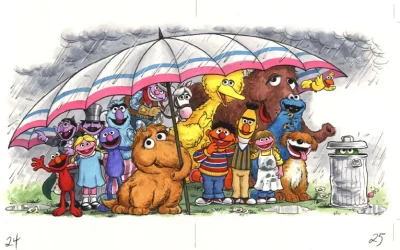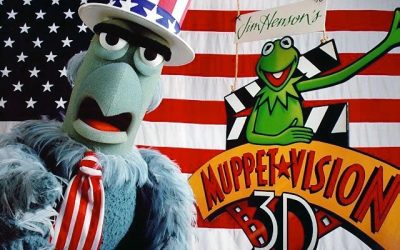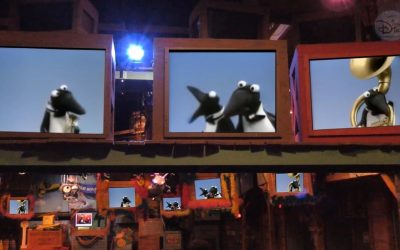Part 1 – Part 2 – Part 3 – Part 4
This week, I’ve been writing about how the Labyrinth is largely made out of Sarah’s life and emotions, but I haven’t really explored how so much of its material is discomfort with the body. It’s got characters who remove their heads and limbs and eyes, door knockers whose handles go through their ears and mouths, a swamp of farts and belches, and a dang shaft of hands. Heck, Sarah’s journey through the Labyrinth is bookended by the image of Hoggle peeing in a pool.
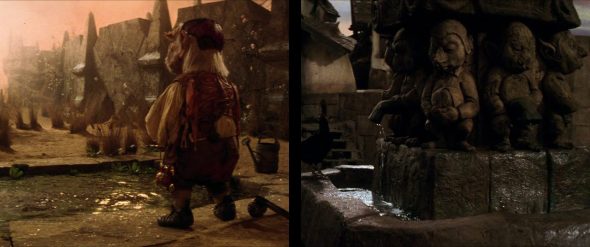
Yet, the king of confrontation with bodily angst is the Goblin King himself, David Bulgie. The prominence of Bowie’s Mr. Snuffleupagus is not incidental. According to one interview with Brian Henson, Jim was very interested in making that part of the costume especially large and intimidating because he believed “that’s what the movie’s about!” I agree with Brian Henson’s Jim Henson on this point, especially in the context in which it was said (which I am conveniently omitting for now and will circle back to near the end to give this article some structure). However, the more important point that I can’t stress enough is this: Jareth is not such a big deal.
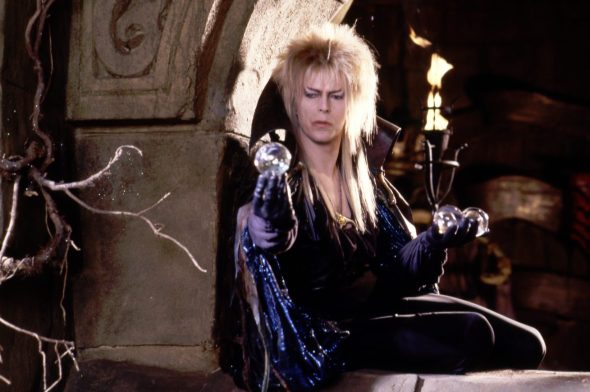
I’m here to antagonize fairly common readings of the film, including the viral Tumblr fan theory that Jareth has been bringing countless Sarahs into his labyrinth for ages, turning all their babies into goblins. Growing up, I assumed something along those lines before I had ever heard of Tumblr – this dang creep keeps stalking girls and taking their babies. Maybe he likes Sarah more than the others, or maybe not. These days, I don’t buy that.
As we’ve established, the image of Jareth is one of the many images that comes to life from Sarah’s room. Actually, he’s not just one of the images. He’s two. The photos of David Bowie with Sarah’s mother that we see on Sarah’s mirror and in Sarah’s scrapbook present him as Sarah’s mother’s romantic partner on stage (and off stage, because of course this movie blurs the lines between real and imaginary romance from the jump). Apparently, as I learned from Kristi O.’s article, the novelization identifies this man as Jeremy.
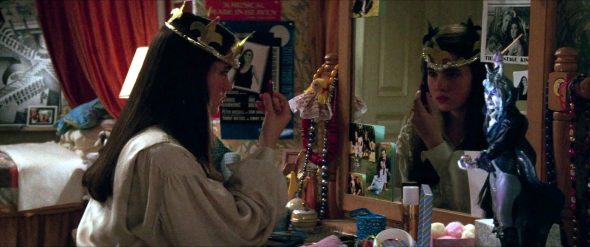
This means that the movie invites us to see Jareth as just another magical manifestation of Sarah’s decor and Sarah’s mind. He’s the most prominent one because what he represents is so pertinent to Sarah’s struggles as she is finally hitting puberty at age sixteen. Sarah kind of wants to stay a child, kind of wants to be an adult, and very much wants to live in a child’s fantasy of adulthood… or so she thinks. Jareth, alluring as he may be, serves to raise the question, “are you sure”?
Of course, we want him to be more than that, because… well, somebody has to be responsible for creating this Labyrinth, right? And he’s the king! He says it’s his labyrinth! He started this whole story by taking Toby! Remember though, this is a Jim Henson production, so the king is probably a fraud. Let’s not take his position for granted.
Remember at the beginning when Sarah calls for the Goblin King to take Toby away? It doesn’t work. He does not take Toby away, and the goblins don’t take him at Jareth’s command. They can only take him at her command.
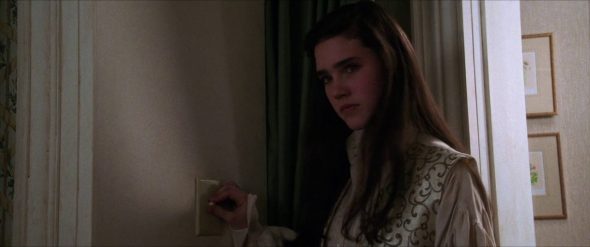
In the Goblin King’s last stand, when a weary, almost skeletal Jareth tells Sarah everything he’s done to be generous to her, his first example is taking the child, which, as we’ve established, is a lie. He’s totally full of it. It’s true that everything about him exists for her, but he certainly hasn’t been trying to help her. He says he reordered time for her, but he reordered time by taking away the time she was assured she had to solve the Labyrinth. He says he turned the world upside down for her, but the closest he came to turning anything upside down was the Escher room, and this was also a deterrent. He’s so desperate to make the case for his existence that he even says, “You cowered before me; I was frightening,” which isn’t how causality works and isn’t even really true given the bravery she showed right from the start.
It’s tempting to view Jareth as an important figure because he’s the only one taking authorship credit for this world, and we want to give it to him so everything will make sense. However, Sarah’s triumphant act during the film’s climax is one of rejecting his authorship and reasserting her own, so I’m reluctant to treat him as the godlike creator he’d like everyone to think he is. That’s letting him win.
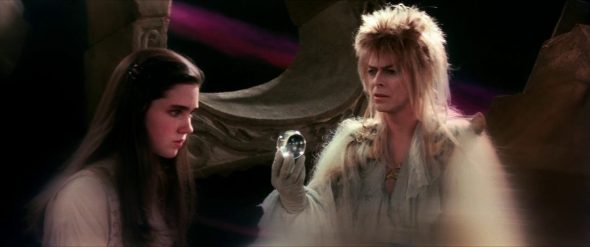
Just for fun, let’s belittle Jareth even further. Here’s a wild reading of the film for those of you who, like me, want to take even less about Jareth for granted. What we think we know is that he first appears as an owl who watches Sarah in our world, then takes a human form and takes Sarah to the fantasy world. His wrap-up is the old “the protagonist makes the villain’s crystal ball burst, and all the evil is undone as the villain turns into a bird and flies away” ending. This is also the wrap-up Jim used for his antagonist in The Frog Prince, which is a baffling “two nickels” situation, but very much not the point. The point is that we don’t really know that this happens.
What follows is one reading of the text. A reading that I think is fun, and that serves the big themes and aims of the text, but not necessarily how I always read the film. What follows is not a fan theory. It couldn’t be. If I used this esteemed website to share a fan theory, the editors would promptly make me Prince of the Land of Fired from ToughPigs.com. So it’s a reading, not a fan theory. The difference is that it’s more academic, yet somehow matters even less. The filmmakers would likely disagree with this reading, but they have no power over me.
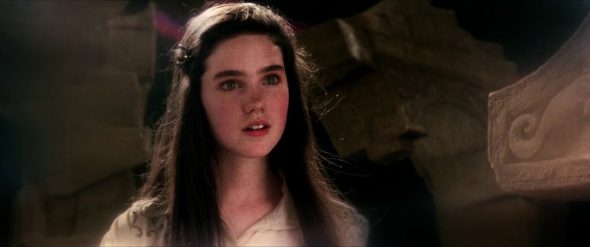
Let’s take a closer look at that owl. Just the owl. The owl flies into Sarah’s house. When Sarah returns, the owl is still in Sarah’s house, having made its way to the foyer, and it flies away. At no point does the owl appear between these scenes. Even in the moment when the owl turns into Jareth… well, no it doesn’t. We don’t actually see that happen. Jareth appears in the doorway, whereas the owl is already in the house, where it will be found again at the end of the film. While Jareth’s shadow does rise into the frame in a way that may suggest a transformation, this can just as easily be read as a formation. If there is any transformation, it is at the end, when Jareth’s clothes turn into the owl. In conclusion, we can read Jareth as the primary expression of the owl, not as the owl itself. We’ll call this interpretation of the film “J.D.’s Bonkers Owl Reading”.
So, in this reading, what’s the owl’s deal? As it happens, the owl is an ancient symbol of wisdom and perspicacity. I mean, it’s an ancient symbol of a bajillion different things across several different mythologies, but in our culture, the notion of “the wise old owl” seems particularly prominent. For this reason, I like to read the owl as a representation of insight. In Freudian psychoanalysis, insight is what happens when a person is liberated by gaining a clear understanding of themselves and bringing their subconscious thoughts into their consciousness. This makes it only fitting that the final scene features Sarah making figures from her fantasy life part of her real life and setting aside that which she doesn’t need anymore. But, more on that part next time.
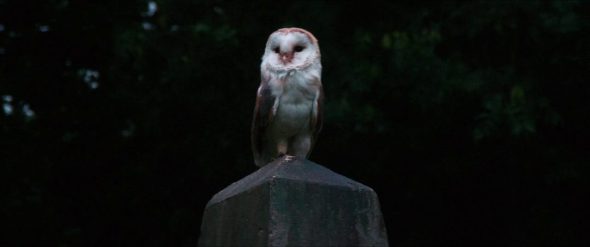
For now, I’ve given you the option to see the labyrinth as the owl’s, or, better yet, as Sarah’s. I’ve cut Jareth out of the story’s beginning and ending, and I’ve hopefully succeeded in undercutting the rest of him. How much of this effort is just my attempt to make myself comfortable watching this already unsettling movie now that I have the especially unsettling knowledge of the allegations against David Bowie pertaining to his relations with teenage girls? Probably a lot! It’s probably a lot of that! Oof.
However, I also think viewing Jareth as smaller and less real than he seems is crucial for our understanding of the text, if we want to understand it well. On first watch, the movie certainly makes him out to be immensely significant and powerful, but the movie is a liar. If Jareth had that much power over Sarah, he’d snap his fingers and she’d be back in her room. For as much as the movie lies, though, it winks. Once you start to catch on, Jareth kind of unravels, but somehow, he also makes more sense. Even his pants make more sense.
“Jareth has the tight pants because he is many, many things that a teenaged girl relates to,” Brian Froud once explained (see page 57 of Labyrinth: The Ultimate Visual History by Paula M. Block & Terry J. Erdmann). “He is a rock star, and he is also a leather jacket guy–a classic ‘bad boy’–and he’s Heathcliff, and also a ballet dancer. I gave him a swagger stick that has a crystal ball on it, but if you look at it closely, it’s a microphone! There are a lot of subtleties going on in there, but it was always this romantic figure that I was after. He was never quite real. He’s an amalgam of the inner fantasies of this girl.”
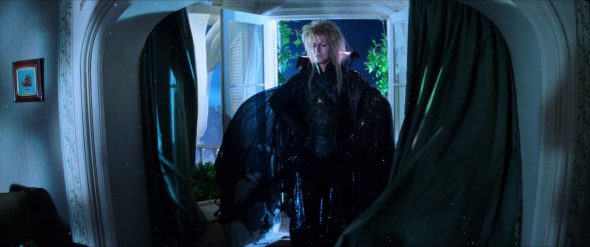
Funnily enough, Brian Henson elaborated on what purpose Jareth (and, um… Jareth’s Brother Mr. Noodle) serves for Sarah in that interview I mentioned earlier. “She’s, like, fifteen, [and] she wants to be treated like an adult, but– WOAH! That thing’s scary!” On the page of Ultimate Visual History mentioned above, George Lucas says Jareth is “like the Devil,” and also describes him as “completely alluring”. He’s a complicated jumble of the innermost desires that a young person, or at least a young person like Sarah, is alarmed to find within oneself. Which makes the casting of David Bowie especially fascinating… but this will also have to wait until next time.
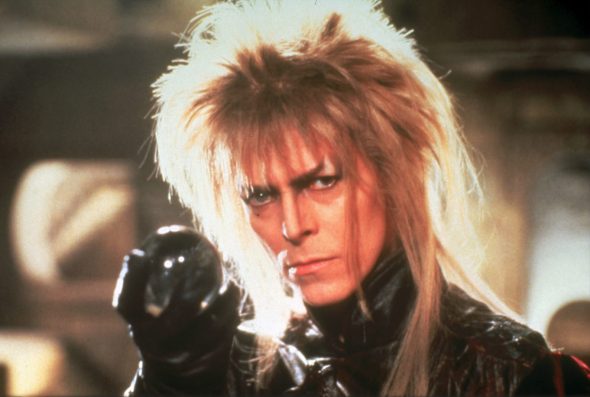
I can’t imagine you’re 100% sold on any of my Labyrinth takes, but that’s fine! I don’t need that. My hope is that you’’ll come away from this article series, and this movie, with whatever insights are valuable to you. This movie exists for our benefit more than it does for the benefit of the fictional character Sarah Williams. After all, if the owl brings the insight that comes from introspection, it should give us pause that the first person the owl visits in this film isn’t Sarah. It’s the viewers. It’s us.
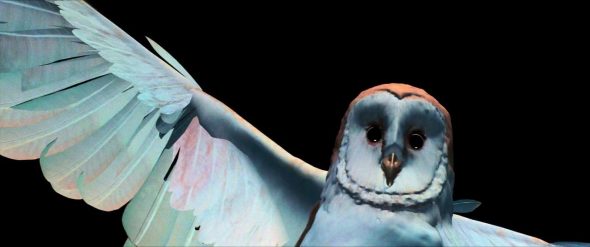
Click here to talk about Jareth’s Slimey the Worm/Mr. Johnson/Flying Zucchini Brother/Topo Sticky on the ToughPigs Discord!
by J.D. Hansel – jdhansel@toughpigs.com

